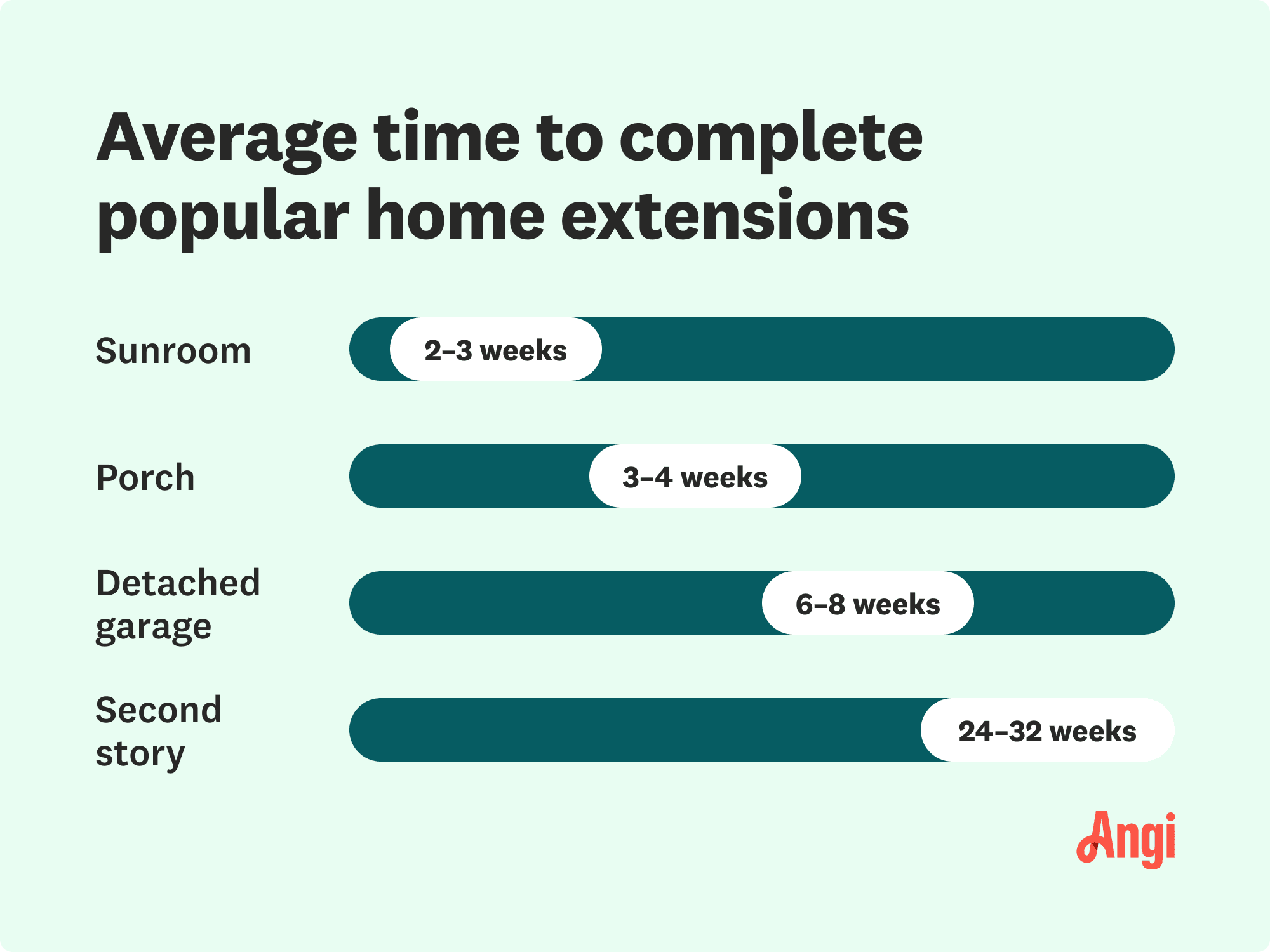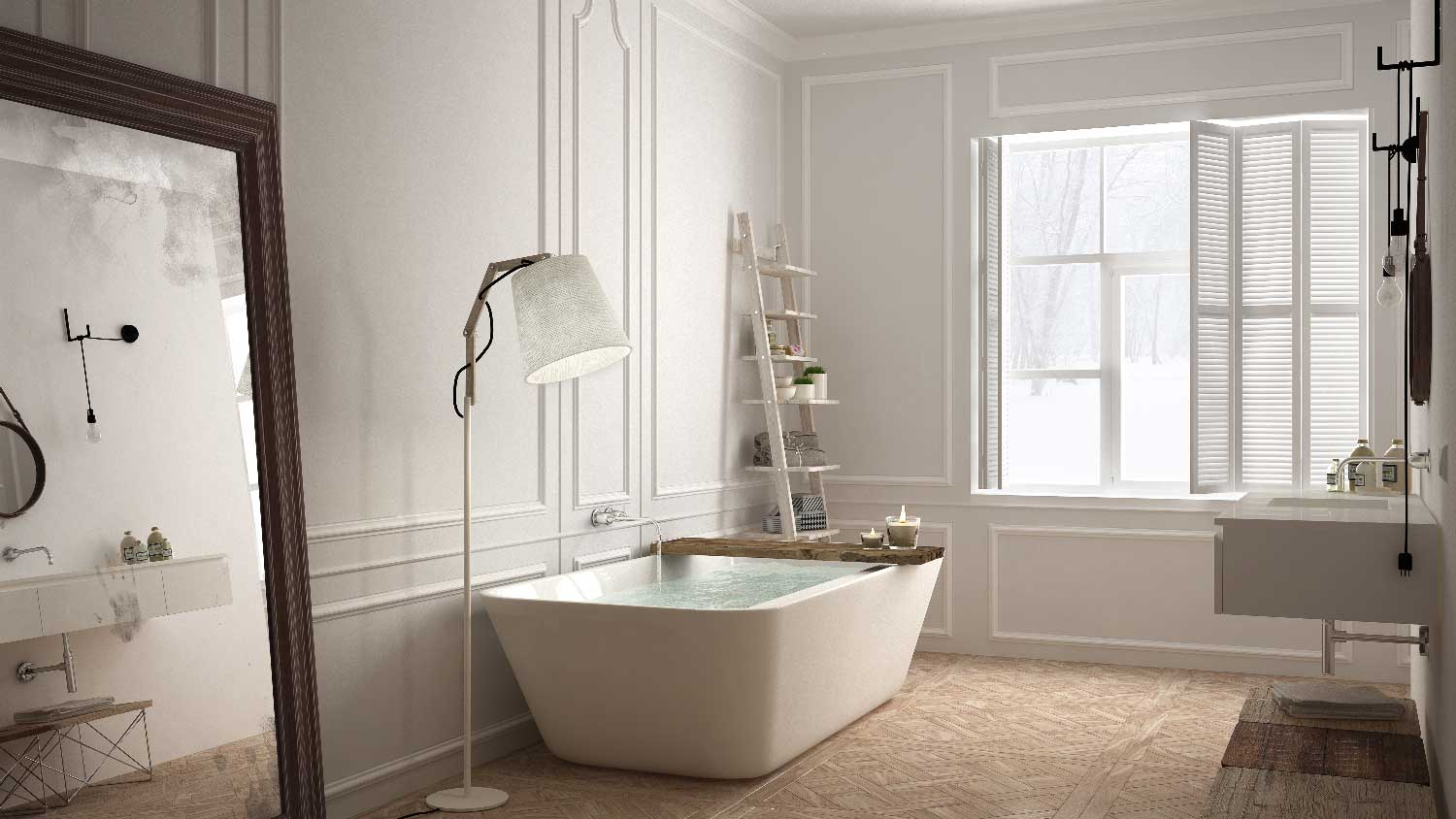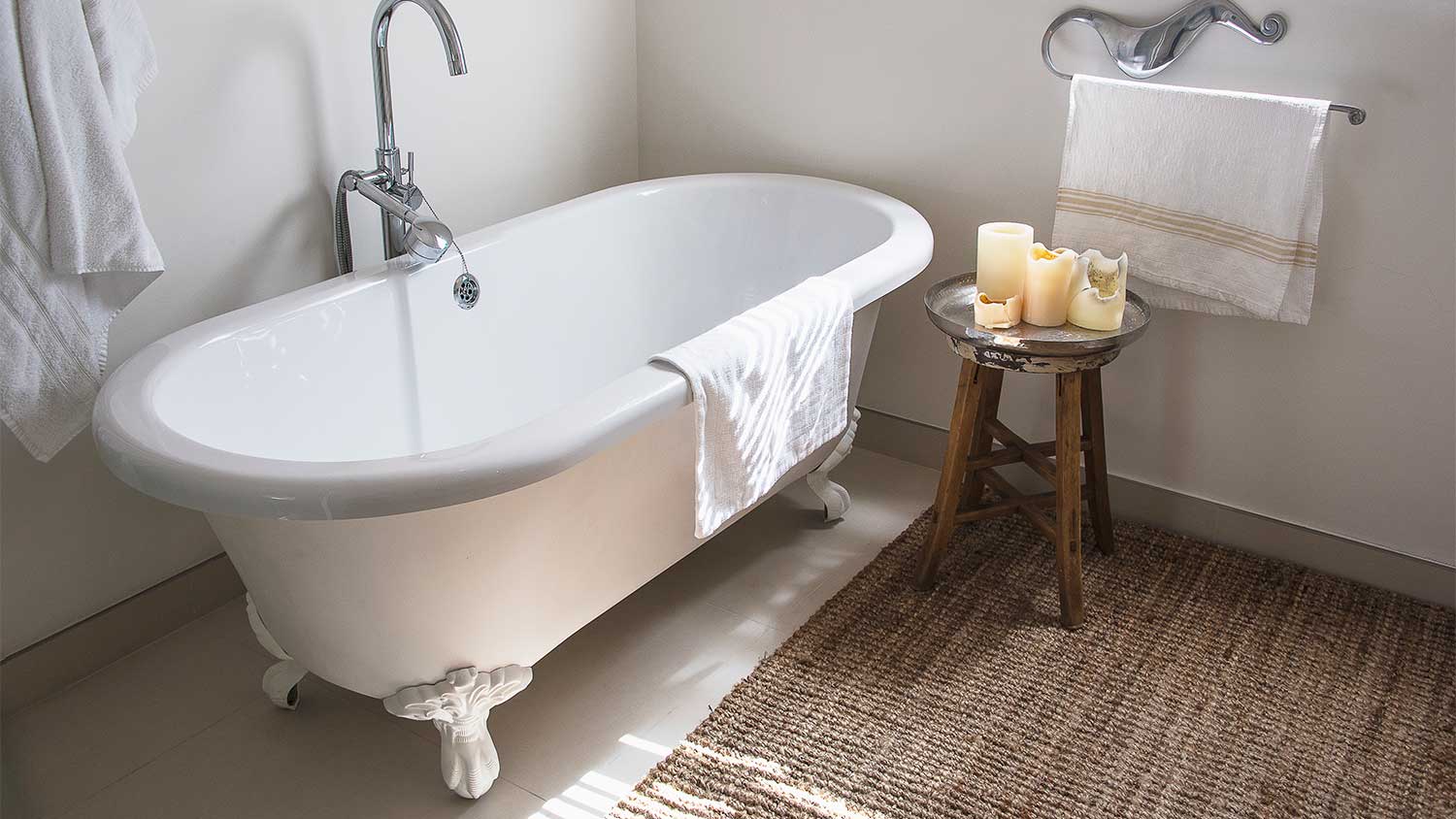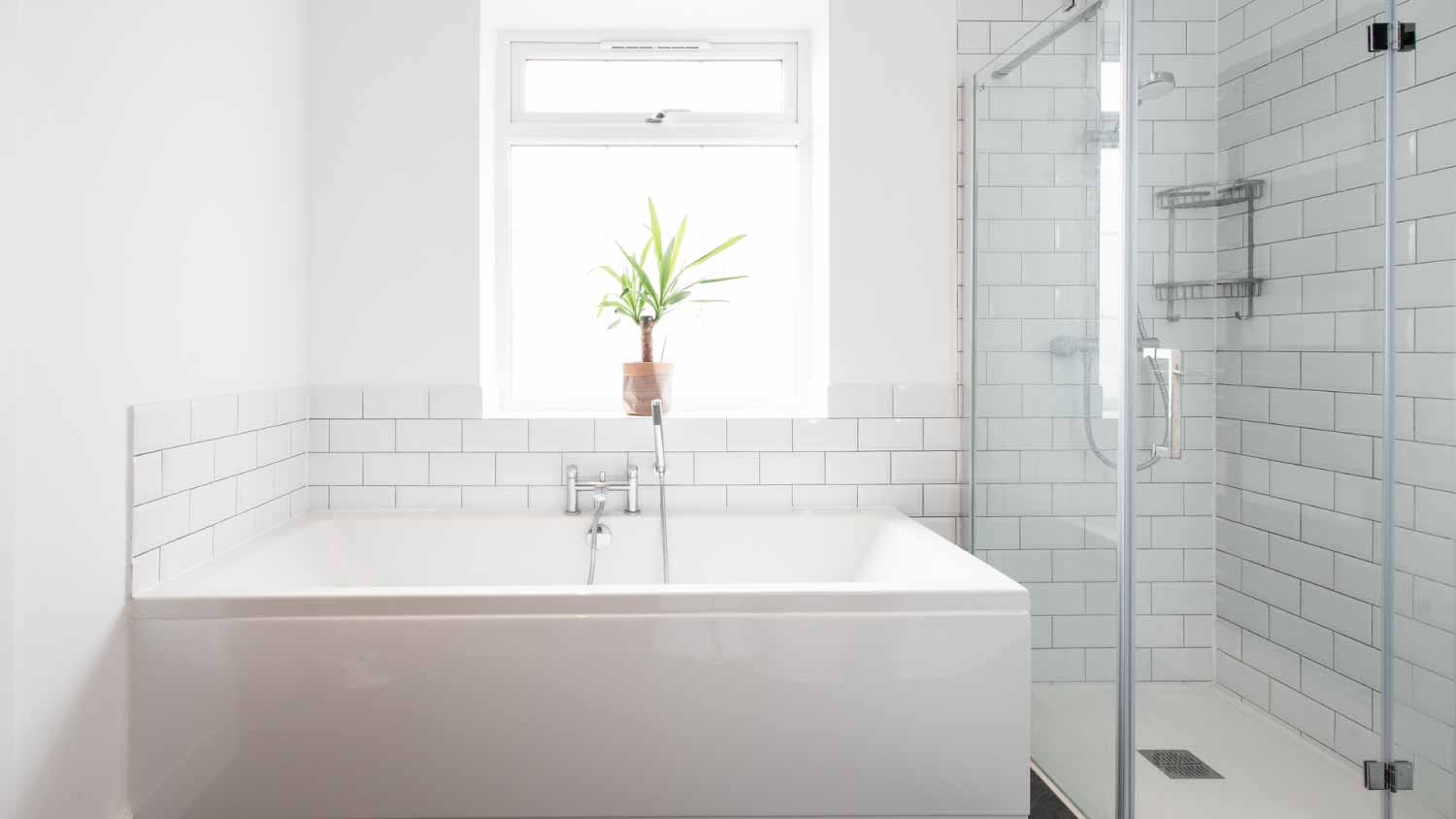
Remodeling your bathroom can add significant value to your home. Your bathroom remodel cost in Columbus, OH will depend on size, fixtures, materials, labor, and other factors.
Kitchen and bathroom remodel costs depend on your project and location. Check with a local pro for your specific job.
San Francisco homeowners will pay more than the national average for a home addition due to the city’s high cost of living.
The relatively small average lot size in San Francisco may make building up more feasible than building out.
The cost of a home addition depends on the size and type of additions, materials used, labor costs, and more.
If you’re feeling a little cramped in your San Francisco home, a home addition may be the answer. Because of San Francisco’s high cost of living, homeowners can expect to pay a higher cost for a home addition—a little more than twice the national average. The average home addition in San Francisco costs $106,843, with most homeowners paying between $40,256 and $177,591. We break down some of the project costs so you can budget accurately for this project.
The cost of building a home addition in San Francisco, CA, depends on factors like the size of the addition, how you plan to use the space, what materials you choose, whether you build up onto another story or out at ground level, and more. Take a look at some of the things that will affect your total project cost.
Home additions in San Francisco cost between $160 and $400 per square foot if you’re building out and between $600 and $1000 per square foot if you’re building up. The cost to add a 10x10 room to a house costs an average of $25,000 if you build out and $80,000 if you build up.
Where in those ranges your total falls also depends on the complexity of the room and its finishes. For example, adding a bathroom will often cost more than a bedroom since it requires additional plumbing and electrical work. The size of the addition can also affect how long the addition takes to build, which can add to your labor costs for larger projects.
Remember that if you add square footage to your home, the cost of your homeowners insurance will increase accordingly. Before you embark on this project, speak to your insurance company about expected costs.
San Francisco has a relatively small average lot size at around 2,700 square feet and an average house size of just under 1,500 square feet, so if there isn’t room to spare on your lot, you may need to build up onto another story rather than out with a bump-out addition.
| Addition Size (Sq. Ft.) | Bump-Out Build | Second Story Build |
|---|---|---|
| 60 | $10,000–$25,075 | $37,625–$62,700 |
| 80 | $13,375–$33,450 | $50,150–$83,600 |
| 100 | $16,700–$41,800 | $62,700–$104,500 |
| 150 | $25,050–$62,700 | $67,500–$156,750 |
| 200 | $33,400–$83,600 | $125,400–$209,000 |
| 300 | $50,100–$125,400 | $188,100–$313,500 |
| 400 | $66,800–$167,200 | $250,800–$418,000 |
As you can imagine, it takes many kinds of building materials to complete a custom home addition. Material prices vary widely, so your price could push closer to $177,591 if you choose luxury or high-end materials at each step of the way.
Framing Materials Cost:
| Framing Material | Average Cost per Sq. Ft. | Pros | Cons |
|---|---|---|---|
| Wood | $1–$5 | Cost-effective, easy to install | Fire risk, prone to pests and moisture problems |
| Steel | $2–$4 | Durable, fire-resistant | Complex installation, limits roof design |
Insulation Materials Cost:
| Insulation Material | Average Cost per Sq. Ft. | Pros | Cons |
|---|---|---|---|
| Blown-in | $0.50–$2.30 | Low-cost, fast installation | Prone to water damage, less durable |
| Fiberglass | $0.30–$1.50 | Fire-resistant, cost-effective | Lower R-value, easily damaged |
| Spray foam | $1.50–$4.90 | High R-value, resists pests and moisture | Higher cost, more flammable |
| Rockwool | $1.10–$3.10 | Durable, high R-value | Loose fibers can be a health risk, higher cost |
Roofing Materials Cost:
| Roofing Material | Average Cost per Sq. Ft. | Pros | Cons |
|---|---|---|---|
| Asphalt shingles | $1–$1.20 | Affordable, easy to install | Prone to granule loss, shorter lifespan |
| Metal | $5–$16 | Long lifespan, low-maintenance | Higher cost, difficult to repair |
| Slate | $10–$30 | Longest lifespan, high-end aesthetics | Very heavy, difficult to install/repair |
| Synthetic | $5–$12 | Durable, lightweight | Variable quality, may look engineered |
Flooring Materials Cost:
| Flooring Material | Average Cost per Sq. Ft. | Pros | Cons |
|---|---|---|---|
| Hardwood | Long-lasting, many available options | Higher cost, prone to dents and scratches | |
| Laminate | Budget-friendly, easy to install | Difficult to repair, prone to water damage | |
| Tile | Variety of options, easy to clean | More expensive, complex installation | |
| Carpet | Retains warmth, soft to walk on | Difficult to keep clean absorbs odors |
Siding Materials Cost
| Siding Material | Average Cost per Sq. Ft. | Pros | Cons |
|---|---|---|---|
| Vinyl | $3–$12 | Budget-friendly, easy to install | Shorter lifespan, prone to impact damage |
| Fiber cement | $5–$14 | Extremely durable, long lifespan | Higher cost, difficult to repair |
| Wood | $2–$6 | Eco-friendly, wide range of styles | Prone to rot and pest damage, high-maintenance |

The cost to add on a room varies based on the type and size of the room you’re building. Rooms like kitchens and bathrooms require plumbing work that a bedroom doesn’t, while an unfinished attic home addition may not require electrical or HVAC work that a bedroom needs. The cost per square foot for your home addition will vary based on utilities and the finishes required for how you plan on using the extra square footage.
| Addition Type | Average Cost Range |
|---|---|
| Attic | $83,600–$96,150 |
| Bathroom | $73,150–$84,125 |
| Bedroom | $130,625–$150,225 |
| Dining room | $62,700–$72,100 |
| Kitchen | $114,950–$132,200 |
| Laundry room | $16,720–$19,225 |
| Living room | $62,700–$72,100 |
| Mudroom | $25,075–$28,850 |
| Sunroom | $98,225–$112,850 |
| Detached garage | $55,175–$63,550 |
| In-law suite | $172,950–$199,000 |
| Second story | $365,750–$420,100 |
On average, site prep for a home addition costs between $3,000 and $10,000. You may not need any site prep in some cases, while other home addition projects may require grading land, demolishing concrete patios, removing trees, and other work that can add to your total.
Before you start construction, you’ll need a building permit for your addition from the San Francisco Department of Building Inspection. Permit fees vary based on the cost of your project—a permit for an addition with the average cost of $106,843 will be around $2,800, but you may pay anywhere between $600 and $9,000 in permit fees, depending on the scope of your project. Failure to obtain the proper permits can result in hefty penalties, up to nine times the applicable permit fee, so ensure getting the proper permits before beginning work is on your home addition project checklist.
Total labor costs will make up about 40% to 60% of your project costs, and hiring a general contractor or homebuilder in San Francisco, CA, will cost around 10% to 20%. Hiring a qualified pro to manage your build can make the job go smoothly—they can coordinate subcontractors, ensure the project stays on schedule and budget, answer your home addition questions, and confirm the build complies with all local codes and regulations.
Building an addition requires various pros in order to complete the work. Over the course of your project, you may need to bring in a structural engineer to confirm your plans are structurally sound, an electrician and plumber to run utilities to the new space, and a carpenter and interior painter for finish work. Here are some of the pros you may need to hire when you’re building an addition:
Interior painter cost: $2–$6 per sq. ft.
Roofer cost: $4–$11 per sq. ft.
Electrician cost: $50–$100 per hour
HVAC technician cost: $100–$250 per hour
Plumber cost: $45–$200 per hour
Carpenter cost: $75–$125 per hour
Structural engineer cost: $200–$1,500
Landscaper cost: $1,200–$6,200
Home additions add value to your property and offer a return on investment (ROI) of 20% to 50% on average. San Francisco’s competitive housing market and relatively small average home size mean that homes with valuable added square footage can command a higher price when it’s time to sell.
Home is the most important place on earth, which is why Angi has helped more than 150 million homeowners transform their houses into homes they adore. To help homeowners with their next project, Angi provides readers with the most accurate cost data and upholds strict editorial standards. We survey real Angi customers about their project costs to develop the pricing data you see, so you can make the best decisions for you and your home. We pair this data with research from reputable sources, including the U.S. Bureau of Labor Statistics, academic journals, market studies, and interviews with industry experts—all to ensure our prices reflect real-world projects.
Want to help us improve our cost data? Send us a recent project quote to [email protected]. Quotes and personal information will not be shared publicly.
From average costs to expert advice, get all the answers you need to get your job done.

Remodeling your bathroom can add significant value to your home. Your bathroom remodel cost in Columbus, OH will depend on size, fixtures, materials, labor, and other factors.

Small kitchen remodels cost $12,750 on average, depending on the materials, size, labor, and more. Read this to calculate your kitchen remodel costs.

A bidet—stand-alone, attachment, spray nozzle, or toilet combo—reduces toilet paper usage and saves money, but how much is a bidet? Here’s how much you’ll pay.

An updated bathtub can give a bathroom a whole new look. Find out how much it costs to replace a bathtub in Minneapolis, MN, including prices by type and labor costs.

An updated bathtub can give a bathroom a whole new look. Find out how much it costs to replace a bathtub in Seattle, WA, including prices by type and labor costs.

An updated bathtub can give a bathroom a whole new look. Find out how much it costs to replace a bathtub in Austin, TX, including prices by type and labor costs.